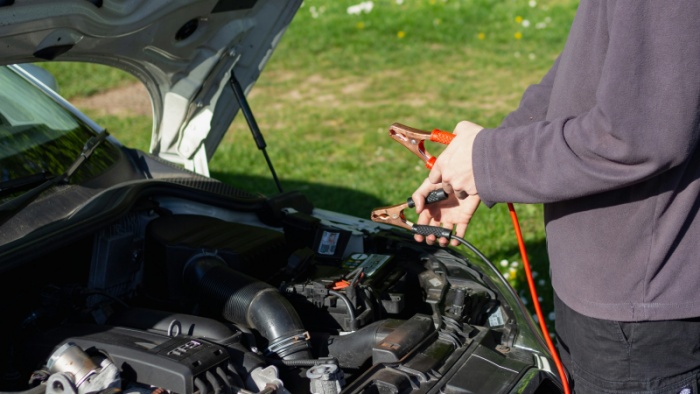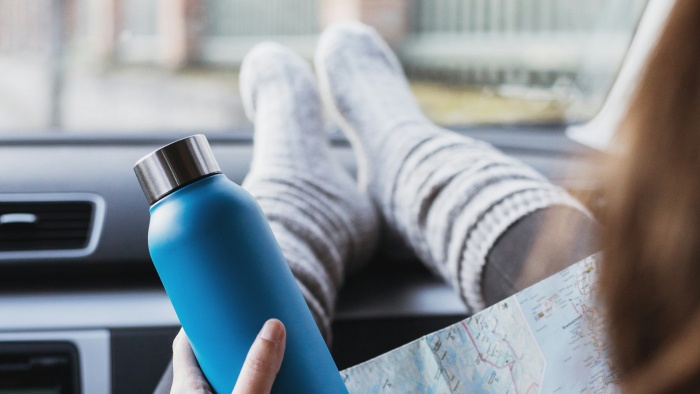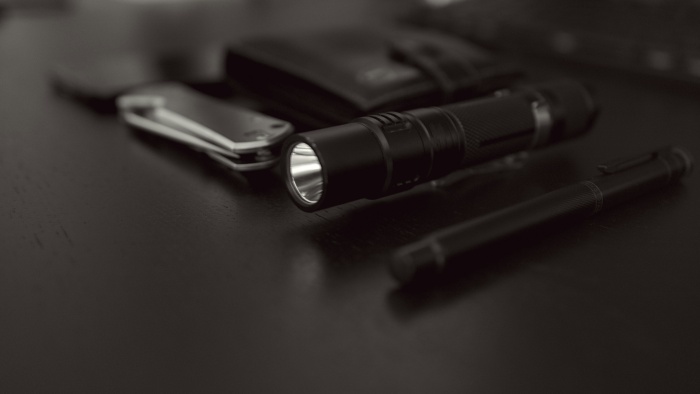14 Car Essentials: What You Should Have

Car essentials are not just about clearing the clutter from your back seat; they’re about preparedness for the road ahead. This carefully curated list of essentials for your vehicle ensures smooth operation and equips you to face unexpected challenges along your journey.
There’s always a chance to be a hero to someone in distress on the road. Imagine lending a hand to someone stranded and finding a connection that could blossom into something more. It might seem far-fetched, but the utility of these items remains undiminished by such whimsical possibilities.
Urban drivers may not find all items necessary due to proximity to services, but for those in less populated areas or embarking on extensive travels, reviewing these emergency essentials is crucial.
Let your judgment guide you in interpreting these as recommendations rather than mandates. For instance, a resident of Southern California might skip the extra jacket, yet documentation like a license, insurance, and registration is indispensable for all.
Items are organized into key categories: Documentation, Car Repairs & Maintenance, Safety, and Winter Essentials. Discover the 14 indispensable items to keep in your vehicle in 2024, and set off on your adventures with confidence throughout the year!
14 essentials for your vehicle
Documentation
Owner’s manual
Ensure your owner’s manual is indeed in your glove compartment or its usual spot. This manual provides crucial details like the recommended fuel and PSI levels, among other vehicle-specific information. Since it’s included with your purchase, keeping it in your car means you’ll always know where it is.
Car repair documentation
Storing your car repair records, insurance claim forms, and AAA details in one place is advisable. These records not only aid in selling or servicing your car but also offer a history of the vehicle and can be claimed as a business expense.
License, insurance, and registration
While it might be apparent, having your license, insurance, and registration in your car at all times is essential. Updating your glove compartment with the new insurance card can be easily forgotten, leaving you without vital documents required by law and often requested by police officers.
Being prepared with these documents ensures you’re ready for any drive, providing peace of mind and compliance with the law.
Store all vital car documents in a folder within the glovebox:
- Owner’s manual
- Car service receipts
- Vehicle registration
- Insurance documents
- Emergency contacts
Car repairs and maintenance essentials
Jack, spare tire, and lug wrench
Consider these three items as a single essential trio. Experiencing a flat tire without a spare, discovering your spare is deflated, or realizing you’ve left your jack at home can be incredibly frustrating. Ensure you always carry a properly inflated spare tire, a jack, and a lug wrench in your vehicle. Without all three, you might find yourself stranded. If your vehicle is equipped with special locking lug nuts, don’t forget the lug nut key.
Jumper cables
A dead car battery can leave you reliant on the uncertain chance of a passerby for a jump-start. However, jumper cables alone won’t suffice; you’ll also need an emergency battery booster. While roadside assistance from your insurance might be an option, it could involve a lengthy wait, especially if you’re in a hurry or in a potentially unsafe location.

Jumper cables are an affordable investment, typically under $20 in stores or online. Being prepared with jumper cables and knowing how to use them can save you from the inconvenience of a dead battery.
Compact battery jump-start kits now also offer USB ports to charge your devices, making them a versatile tool for both emergency starts and keeping gadgets powered.
Tire pressure gauge
This simple tool is invaluable for maintaining proper tire pressure. It’s impossible to assess the exact air pressure in a tire alone, but a tire pressure gauge makes this task straightforward.
Regular checks on all tires are recommended, even if they don’t appear to be low. Keeping your tires at the correct pressure enhances handling, extends tire life, and improves fuel efficiency.
Affordable standard gauges are available for less than $5 on Amazon, making it an essential safety item for your glovebox.
Wd-40
WD-40 has countless applications in automotive maintenance, from loosening tight bolts to preventing squeaks. It’s a versatile solution for many minor car repairs and maintenance tasks.
duct tape
Duct tape is a miraculous, multi-purpose tool capable of temporary fixes for a variety of car issues, from leaks to cracks. For both serious and humorous examples of duct tape repairs, explore these heroic uses of duct tape in automotive fixes.
cleaning supplies
While not life-saving, having certain cleaning supplies in your car can significantly reduce frustration during your journeys. Items to keep include:
- Zipper lock bags
- Reusable shopping bags
- Paper towels
- Tissues
- Car trash can
- Water bottles

Safety essentials
First aid kit
The unpredictability of life, especially with kids around, makes a first aid kit an indispensable item in your car. Whether it’s for cleaning a minor cut or dealing with a sudden blister, having a basic set of medical supplies can be a lifesaver.
Your kit should contain items like Band-Aids, antiseptic ointment, gauze pads, scissors, and gloves. For those who prefer a hassle-free option, pre-assembled first aid kits are readily available online.
Tactical flashlight
A tactical flashlight is crucial for any unexpected car maintenance in the dark. Ensure you have one in your vehicle for those moments when you need to change a tire or check under the hood at night. Additionally, keep spare batteries in your glove box to avoid being caught in the dark.
Tactical flashlights, favored by police and military forces, not only provide superior illumination but can also serve as a means of self-defense.

Reflective triangles and/or flares
To complement your tactical flashlight, having reflective triangles and/or flares is essential for nighttime safety. These should be placed around your vehicle if you’re stopped on the side of the road, enhancing visibility to passing drivers and reducing the risk of accidents.
Multi-tool
A versatile multi-tool is invaluable for those moments when you might need scissors, a screwdriver, or a blade. It’s comforting to know you have a variety of tools at your disposal in one compact device. Here’s a list of top multi-tool picks.
Car hammer
A car hammer, or emergency escape tool, could be a lifesaver in a crisis. While some might try using a tactical flashlight to break a window, a car hammer is specifically designed for this purpose, making it easier to shatter glass and escape. Many models also include a seatbelt cutter. It’s recommended to have one within easy reach in every vehicle.
Conclusion
Understanding and maintaining a well-equipped vehicle with these car essentials is not merely about convenience; it’s about ensuring safety, preparedness, and the ability to respond effectively to both expected and unforeseen circumstances on the road.
From the fundamental documentation to the crucial tools for car repairs and maintenance, alongside the indispensable safety items, this list comprehensively covers what you need to carry in your vehicle for a secure and smooth journey.
Whether it’s a routine commute or an adventurous road trip, these essentials empower you to face various challenges, potentially turning you into a roadside hero or simply ensuring your day proceeds without a hitch.
Remember, while the specifics of what you carry can be tailored to your environment and needs, the core principle remains the same: preparedness. Keep these car essentials in mind and in your vehicle in 2024, and drive with confidence, knowing you’re ready for whatever the road brings.
FAQs
What should I do if I can’t find my owner’s manual?
If your vehicle’s owner’s manual is missing, you can often download a digital copy from the manufacturer’s website or purchase a replacement from a dealership. Some websites also offer free PDF versions of manuals for various car models. Having access to your owner’s manual is crucial for understanding your vehicle’s specific needs and maintenance requirements.
How often should I check the items in my car’s emergency kit?
It’s wise to review and refresh your car’s emergency kit at least twice a year. Check items like the first aid kit for expired products, ensure your spare tire is properly inflated, test the battery booster pack, and replace used or outdated items. This ensures that your essentials are ready to use when needed.
Can I use any jumper cables, or are there specific types for different vehicles?
While most jumper cables are universal, there are differences in cable gauge (thickness) and length. For most passenger vehicles, cables with a gauge of 8 to 10 are sufficient. However, for larger vehicles or trucks, thicker cables (such as 4 to 6 gauge) are recommended for their ability to carry more current. Always check your vehicle’s manual for recommendations.
Is there a recommended place to store the car hammer for easy access?
The car hammer should be stored within reach of the driver’s seat, ideally mounted on the door panel or in the center console. Some car hammers come with mounting brackets for this purpose. Accessibility is key in an emergency, so it should be placed where it can be easily grabbed without having to search for it.
What items should be included in the cleaning supplies for my car?
Beyond the items listed, consider adding a microfiber cloth for dusting and cleaning surfaces, hand sanitizer, a small broom and dustpan for tidying up crumbs or debris, and a compact bottle of multi-surface cleaner. These additions can help keep your car’s interior clean and comfortable for both daily use and long journeys.

